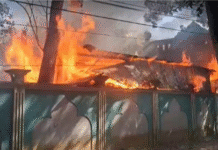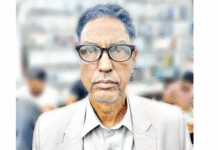
It would have gone unnoticed as another suicide of a heart-broken young woman, a forgettable statistic among the thousands of desperate individuals taking their own lives to escape some harsh reality or the other. But no, the death of a 21-year-old college-going woman is still in the conversation. It could be because a case has been filed by the deceased woman’s sister against a businessman who she accuses of being involved in this death. The forensic evidence and the court will decide whether it is a case of murder or whether the accused drove her to commit suicide, or whether the evidence is inconclusive to prove either crime.
But truth be told, it’s not just that a case has been filed that has excited the imagination of so many. It is because the accused is the managing director of one of the biggest business conglomerates in the country, the son of a big business tycoon, and the deceased is a pretty young woman from a small town, a nobody in most people’s eyes who has suddenly become (in)famous because of her death. And suddenly, it’s everyone’s business to engage in vociferous character assassination of the young woman who cannot defend herself against the vile accusations inflicted on her.
 For all latest news, follow The Daily Star’s Google News channel.
For all latest news, follow The Daily Star’s Google News channel.
A search with her name on YouTube will bring forth a barrage of videos—her childish TikTok posts, apparent CCTV footage of her alone in her flat, pictures of her dead body, commentary on every aspect of her life, and even messages exchanged with her alleged paramour who is now the accused. The newsfeeds in social media, too, are bursting at the seams with the young woman’s Facebook photos and videos accompanied by many members of the moral police who consider themselves entitled to pass judgement on her and her family, gleefully explaining how the victim’s and her family’s lack of morals and greed for money led to her death. The comments sections under these mini talk shows are filled with vitriol and obscenities aimed at this dead woman and her family members.
Victim blaming has always been the predictable consequence whenever the crime is against a woman. Even death does not save a woman/girl from the onslaught of misogynous comments from strangers. But more dangerous is the role of some mainstream media outlets that have been just as vicious and judgmental as the rabid haters on social media. So is it social media influencing mainstream media or the other way round? Or is it the overall culture of shifting the focus and blame on the female victim rather than the accused? This was the case for the 17-year-old O level student who was raped and died of her injuries in January this year, even after the accused, her boyfriend, confessed to the crime. Even in death she became the victim of social condemnation and slander. It happened with the victims of the sensational Banani rape case of 2017. It happened in the case of Sohagi Jahan Tonu, the second-year college student who was raped and killed by “unknown assailants”. Tonu’s character was put on trial by social media and some newspapers too. Her body had to be exhumed for a second autopsy at her family’s insistence, before it could be officially established that she had been raped and murdered. Her rapist-murderers are yet to be identified.
So what is the role of the police in all this? In the case of the 21-year-old woman who was found hanging in her bedroom, the police did take the case filed by her sister, and high-ups have assured that it will be properly investigated. But can they explain how pages of her personal diary—which are in the custody of the police and considered “evidence”—end up making the rounds on social media giving those self-appointed defenders of morality some juicy material to work on? How do alleged mobile phone conversations between the victim and the accused get leaked out to social media and then even picked up by the mainstream media? One cannot help but remember the video leaked out on social media by OC Moazzem Hossain of a degrading interrogation of Nusrat Jahan Rafi, the madrasa student who was later gruesomely murdered by a group of students and teachers at the behest of the madrasa’s principal against whom Nusrat had filed a sexual harassment case. Moazzem Hossain was later sent to jail by the court. Will there be any probe to find out how evidence in the latest case has been leaked out into the public domain? When the power dynamics are tilted on the side of the accused, these anomalies are not surprising, and there is always the disconcerting possibility that influence and money will impact the outcome of the case.
Ultimately, it is about responsibility. Law enforcers are responsible for investigating the case sincerely and diligently, while protecting the victim’s privacy (whether she is dead or alive), protecting the victim’s family and witnesses, safeguarding everything considered as evidence and being immune to pressures from influential people connected to the accused to go against the victim’s interests. Departmental action and even legal steps must be taken against law enforcers who leak out evidence that may discredit or defame the victim, which can go against the victim in court. The judiciary must also ensure that victims of rape or murder or abetted suicide are not vilified by defence lawyers by questioning their character. The archaic Section 155 of the Evidence Act 1872 allows just that—introduce character evidence against rape complainants during trial—and human rights lawyers and activists have long been calling for this provision to be scrapped.
What about the responsibility of the mainstream media? The media has the responsibility to establish the truth of a crime, without sensationalising the reporting with speculative comments regarding the victim’s lifestyle or past relationships, as has been done in the case of the 21-year-old woman. The media’s job is to establish the facts and avoid unnecessary, irrelevant information that ends up portraying the victim as someone who “deserved what she got”. It is not relevant whether a victim lived in a costly flat or whether she wore expensive clothes and how many relationships she had. What is important is what really happened to her: Did she take her own life? And if so, was she compelled to do so because of someone else’s actions? Or was this in fact a well-orchestrated murder made to look like a suicide? That’s what the mainstream media should be trying to unravel, not fuel the cruel, crass gossip generated in social media.
As for the netizens and others who avidly take part in these discussions: do they not have a responsibility too? Yes, they do. They have a moral duty to refrain from rumour-mongering, from shaming the victim and casting aspersions on her character and her family’s character. These actions may attract many shares and encourage others to give their two-pence worth of misogyny and tastelessly expressed self-righteousness, but what they do is hurt the victim and may even hamper her chances of ever getting justice.
Fortunately, there are voices of reason and sanity among journalists, activists, academics and other members of the public, and discussions are taking place in online platforms that condemn the vindictive shaming of victims on social media and raise questions regarding the abandonment of journalistic ethics and integrity when the mainstream media joins this bandwagon of slander of the victim, sometimes mainly to protect the accused. Such voices must be louder and stronger, and deserve the support of the state and its machinery and the society. Victim blaming must be treated as a crime that has to be shamed and shunned.
Aasha Mehreen Amin is Head of Editorial and Opinion, Senior Deputy Editor, The Daily Star.










